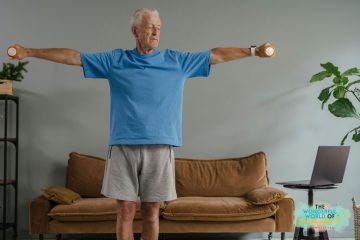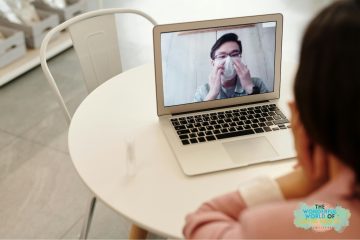Around 1 in 3 Singaporeans over 50 suffer from falls every year. In 2006, injurious falls cost $6.8 billion in hospital admissions, this is not including the indirect costs such as out-patient appointments and families taking time off work. The statistics also tell us 50% of the elderly who have fallen will fall again the following year. These statistics are expected to rise with the increase in aging population and the reason why Falls Prevention is key with the elderly.
We all fall as we age, right?
We often hear people say that falling is a “natural” part of aging, this is NOT the case. Falling in old age is not inevitable but there are many elderly who do not fall too. So, what’s the reason some people fall and others don’t?
We are all individuals with varying needs and health status. Ill health and lifestyle factors can be big contributors to falls risk. Additionally, no falls are equal, some lead to more debilitating outcomes than others. A common outcome from falling is hip fracture. Studies in Singapore reveal the shocking statistic that in patients recovering from a hip fracture, only 25% percent made a full recovery and 40% ended up in a nursing home.
Reasons for Falls can be Complex
The multifactorial nature of falls makes it difficult to give a one-stop shop, well rounded solution for prevention without a holistic overview of a person’s circumstances.
Recognized contributors to falls are:
- Frailty
- Balance issues
- Reduced reaction time
- Muscles weakness
- Reduced vision
- Medications such as Diuretics, sedatives or anti-hypertension medications
- Poor footwear
- Fatigue
- Reduced nutritional intake
- Loneliness
- Environmental hazards / unsupportive environment
The majority of falls in Singapore happen at home and are often due to a combination of factors. The World Health Organisation (WHO) Global Report on Falls Prevention in Older Age highlights that there is good evidence that home assessment and intervention is effective in reducing falls in high risk populations.
The MOH falls guidelines in Singapore recommend a home environment assessment to identify fall hazards and identify solutions for the people at risk. It is highlighted that this intervention is most effective when completed by an Occupational Therapist (OT) compared to other care providers because the OT looks at the different facet of a person from their environment to the lifestyle and various other meaningful area of living.
The WHO also encourages self-management, rather than dependence on professionals, by giving older people an active role. Sometimes, getting back into a role may require some practice or a period of rehab but the long term benefits of this are seen both financially and in quality of life.
A multidisciplinary approach involving care provided by multiple professionals with different specialties will be the most effective to reduce falls risk. Physiotherapists are a natural partner with the OT, while practitioners of other disciplines will be deployed based on the individual needs of a person. There’s not a one size fit all solution.
Reducing Falls Risk: Where to get started
Intervening before a fall happens is best, although it’s never too late. First, you need a holistic assessment from an occupational therapist to identify a person’s falls risk. The initial assessment will assess the person’s physical, cognitive (thinking), emotional, environmental and social falls risk factors. The occupational therapist will then be able to prioritise the main problem areas and advise on who else needs to be involved, for example there may be need for a physiotherapist, occupational therapist and dietitian working together as a multidisciplinary team.
The initial assessment can be done at the same time as a home assessment. This means the therapist can also review the environment, help identify hazards and give on the spot solutions to begin reducing falls risks straight away.
The Occupational Therapist will also help a person get back into an active and meaningful role, safely taking into consideration any impairments or barriers the person may be facing.
It’s important to note however that falls intervention requires commitment from the patient and their caregivers/loved ones. Rarely is the problem solved with a quick solution but it is a great investment when considering the gains of prolonged health and reduced financial burden through falls prevention.
Lifeweavers are happy to help at any point of your journey, from signposting the way to working alongside you. We would also love to hear your success stories of falls interventions that have helped you!
But if you need help with someone who has fell recently or is becoming more weak, do drop us a line immediately. We will do an assessment and recommend next steps as soon as we can.<bold>?
References:
HPB-MOH (2015) HPB-MOH Clinical Practice Guidelines 1/2015, Singapore: HPB-MOH
Published online 2017 Mar 14. doi: 10.1186/s12877-017-0461-0
SHARE THE ARTICLE WITH ANYONE ON THE PLATFORMS BELOW:






